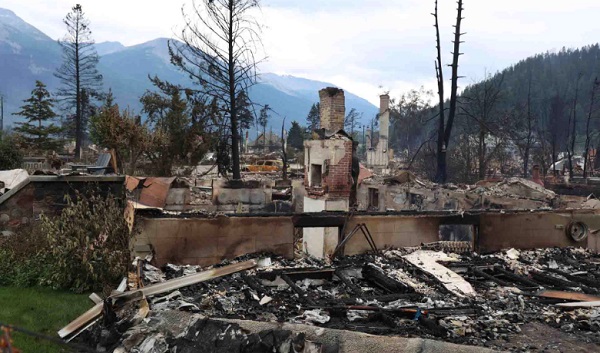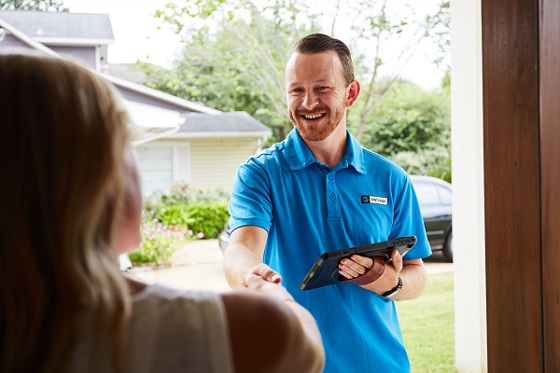Alberta
Province providing 250 modular homes to help ease housing crisis in Jasper

Supporting Jasper residents’ return home |
Alberta’s government continues to support recovery efforts in Jasper and is helping residents return to the community with $112 million in funding for interim housing.
Alberta’s government continues to support recovery efforts in Jasper and is helping residents return to the community with $112 million in funding for interim housing.
Alberta’s government is committed to ensuring Jasper residents are supported as the community recovers from the summer’s wildfire. To support rebuilding efforts in Jasper, government is committing $112 million to build interim housing for displaced Jasper residents and residents of Pine Grove Senior Citizens Manor.
Work on the sites in Jasper has already begun, and the first residents are expected to begin moving in as early as January 2025. Homes in Jasper will be available for essential service workers and support service workers, and other eligible Jasper residents who lost their homes and are employed in the area. Alberta’s government will ensure that interim homes are ready for eligible residents as quickly and efficiently as possible.
“Our entire country grieved when wildfire ravaged Jasper this past summer. We know the rebuilding process takes time, and we’re doing all we can to support Jasper’s recovery. Most of all, people want to return home, and the funding we have approved will speed up that process so folks can rebuild their lives and move forward sooner.”
“We know that Jasper residents are eager to get back home and Alberta’s government is committed to ensuring they have the supports they need throughout this rebuilding effort. When ready, these interim homes will address the immediate housing need in Jasper and provide a short-term housing option for those who are working in the town doing the critical work needed to support this rebuild.”
To support the interim housing needs of Jasperites, the government is supporting the construction of modular homes. It is estimated that this portion of the provincial funding will build 250 modular homes for eligible displaced Jasper residents. Modular homes are constructed off-site, in a controlled environment, to allow for all-season construction and accelerated schedules. They are installed using permanent foundations that ensure the safety and comfort of the occupants.
Interim housing units in Jasper will be provided at market rent, and applications and eligibility details will be released in the future. Units in Jasper will be sold at market value when they are no longer required for interim housing for Jasper recovery.
“This interim housing is a much-needed step forward in getting the community of Jasper back on track and getting people into homes. Alberta’s government will continue to work with the town and our partners to restore Jasper as quickly as possible.”
“On behalf of the people of Jasper, I extend our sincere gratitude to the Government of Alberta for their critical support in funding interim housing as we work to rebuild Jasper. This housing isn’t just about the buildings, it’s directly linked to our social and economic recovery including the mental well-being of the community as a whole.”
Alberta’s government is also supporting the residents of Pine Grove Manor with interim housing in Hinton. Pine Grove Manor was destroyed by the fire and this interim housing will keep residents close to their community while the seniors home is rebuilt. Up to 25 units of modular housing will be built for seniors in Hinton on a site that was given to the project by the Town of Hinton. These units in Hinton will later be used as affordable housing for the community. Work on these sites is expected to begin in January and the first seniors are expected to begin moving in as early as April 2025.
“The Evergreens Foundation is proud to work together with the province to move forward on this project with haste. We continue to keep the needs of the seniors who built our province in the forefront as we work through the Jasper recovery.”
A request for proposals will be released on both of these projects as the next steps in this process. Funding from Alberta’s government will be contributed to these projects over two fiscal years.
Quick facts
- The 2024 Jasper wildfire complex destroyed or damaged around 30 per cent of structures in Jasper, including the Pine Grove Seniors Citizens Manor, a government-owned building.
- Wildfire is an insurable event and insurance can cover costs for interim housing for insured individuals.
Alberta
Median workers in Alberta could receive 72% more under Alberta Pension Plan compared to Canada Pension Plan

From the Fraser Institute
By Tegan Hill and Joel Emes
Moving from the CPP to a provincial pension plan would generate savings for Albertans in the form of lower contribution rates (which could be used to increase private retirement savings while receiving the same pension benefits as the CPP under the new provincial pension), finds a new study published today by the Fraser Institute, an independent, non-partisan Canadian public policy think-tank.
“Due to Alberta’s comparatively high rates of employment, higher average incomes, and younger population, Albertans would pay a lower contribution rate through a separate provincial pension plan while receiving the same benefits as under the CPP,” said Tegan Hill, director of Alberta policy at the Fraser Institute and co-author of Illustrating the Potential of an Alberta Pension Plan.
Assuming Albertans invested the savings from moving to a provincial pension plan into a private retirement account, and assuming a contribution rate of 5.85 per cent, workers earning the median income in Alberta ($53,061 in 2025) could accrue a stream of retirement payments totalling $454,741 (pre-tax)—a 71.6 per cent increase from their stream of CPP payments ($264,968).
Put differently, under the CPP, a median worker receives a total of $264,968 in retirement income over their life. If an Alberta worker saved the difference between what they pay now into the CPP and what they would pay into a new provincial plan, the income they would receive in retirement increases. If the contribution rate for the new provincial plan was 5.85 per cent—the lower of the available estimates—the increase in retirement income would total $189,773 (or an increase of 71.6 per cent).
If the contribution rate for a new Alberta pension plan was 8.21 per cent—the higher of the available estimates—a median Alberta worker would still receive an additional $64,672 in retirement income over their life, a marked increase of 24.4 per cent compared to the CPP alone.
Put differently, assuming a contribution rate of 8.21 per cent, Albertan workers earning the median income could accrue a stream of retirement payments totaling $329,640 (pre-tax) under a provincial pension plan—a 24.4 per cent increase from their stream of CPP payments.
“While the full costs and benefits of a provincial pension plan must be considered, its clear that Albertans could benefit from higher retirement payments under a provincial pension plan, compared to the CPP,” Hill said.

Illustrating the Potential of an Alberta Pension Plan
- Due to Alberta’s comparatively high rates of employment, higher average incomes, and younger population, Albertans would pay a lower contribution rate with a separate provincial pension plan, compared with the CPP, while receiving the same benefits as under the CPP.
- Put differently, moving from the CPP to a provincial pension plan would generate savings for Albertans, which could be used to increase private retirement income. This essay assesses the potential savings for Albertans of moving to a provincial pension plan. It also estimates an Albertan’s potential increase in total retirement income, if those savings were invested in a private account.
- Depending on the contribution rate used for an Alberta pension plan (APP), ranging from 5.85 to 8.2 percent, an individual earning the CPP’s yearly maximum pensionable earnings ($71,300 in 2025), would accrue a stream of retirement payments under the total APP (APP plus private retirement savings), yielding a total retirement income of between $429,524 and $584,235. This would be 22.9 to 67.1 percent higher, respectively, than their stream of CPP payments ($349,545).
- An individual earning the median income in Alberta ($53,061 in 2025), would accrue a stream of retirement payments under the total APP (APP plus private retirement savings), yielding a total retirement income of between $329,640 and $454,741, which is between 24.4 percent to 71.6 percent higher, respectively, than their stream of CPP payments ($264,968).

Joel Emes
Alberta
Alberta ban on men in women’s sports doesn’t apply to athletes from other provinces

From LifeSiteNews
Alberta’s Fairness and Safety in Sport Act bans transgender males from women’s sports within the province but cannot regulate out-of-province transgender athletes.
Alberta’s ban on gender-confused males competing in women’s sports will not apply to out-of-province athletes.
In an interview posted July 12 by the Canadian Press, Alberta Tourism and Sport Minister Andrew Boitchenko revealed that Alberta does not have the jurisdiction to regulate out-of-province, gender-confused males from competing against female athletes.
“We don’t have authority to regulate athletes from different jurisdictions,” he said in an interview.
Ministry spokeswoman Vanessa Gomez further explained that while Alberta passed legislation to protect women within their province, outside sporting organizations are bound by federal or international guidelines.
As a result, Albertan female athletes will be spared from competing against men during provincial competition but must face male competitors during inter-provincial events.
In December, Alberta passed the Fairness and Safety in Sport Act to prevent biological men who claim to be women from competing in women’s sports. The legislation will take effect on September 1 and will apply to all school boards, universities, as well as provincial sports organizations.
The move comes after studies have repeatedly revealed what almost everyone already knew was true, namely, that males have a considerable advantage over women in athletics.
Indeed, a recent study published in Sports Medicine found that a year of “transgender” hormone drugs results in “very modest changes” in the inherent strength advantages of men.
Additionally, male athletes competing in women’s sports are known to be violent, especially toward female athletes who oppose their dominance in women’s sports.
Last August, Albertan male powerlifter “Anne” Andres was suspended for six months after a slew of death threats and harassments against his female competitors.
In February, Andres ranted about why men should be able to compete in women’s competitions, calling for “the Ontario lifter” who opposes this, apparently referring to powerlifter April Hutchinson, to “die painfully.”
Interestingly, while Andres was suspended for six months for issuing death threats, Hutchinson was suspended for two years after publicly condemning him for stealing victories from women and then mocking his female competitors on social media. Her suspension was later reduced to a year.
-

 Frontier Centre for Public Policy2 days ago
Frontier Centre for Public Policy2 days agoCanada’s New Border Bill Spies On You, Not The Bad Guys
-

 Business1 day ago
Business1 day agoCarney Liberals quietly award Pfizer, Moderna nearly $400 million for new COVID shot contracts
-

 Addictions1 day ago
Addictions1 day agoWhy B.C.’s new witnessed dosing guidelines are built to fail
-

 Business1 day ago
Business1 day agoMark Carney’s Fiscal Fantasy Will Bankrupt Canada
-

 Opinion1 day ago
Opinion1 day agoCharity Campaigns vs. Charity Donations
-

 Energy2 days ago
Energy2 days agoCNN’s Shock Climate Polling Data Reinforces Trump’s Energy Agenda
-

 Red Deer1 day ago
Red Deer1 day agoWesterner Days Attraction pass and New Experiences!
-

 COVID-191 day ago
COVID-191 day agoTrump DOJ dismisses charges against doctor who issued fake COVID passports






